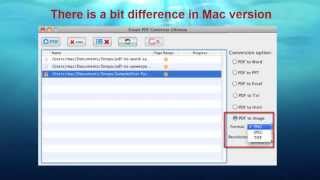Saturday, 27 December, 2025г.
















Где искать: по сайтам Запорожской области, статьи, видео ролики
пример: покупка автомобиля в Запорожье
Convert MBR to GPT
MBR - Master Boot Record: it is a guide sector in the very front of the drive. It was named in 1983 when partitioning the hard disk or flash disk of IBM compatible personal computer. At that time, PC DOS 2.0 was able to support hard disk. MBR describes the information of logical, including file system and organization type. Besides, MBR also contains the executable code produced when the computer loads operating system in the second stage of start or the boot record connecting every partition (VBR). Such MBR is usually called a boot routine.
Note: MBR cannot exist in a media which cannot be partitioned, such as a soft disk.
GPT - GUID (Globally Unique Identifiers) Partition Table: it is a new standard of disk partition table originating from EFI (Extensive Firmware Interface). Compared with MBR, it provides a more flexible disk partition principle.
WHAT ARE THE LIMITATIONS OF MBR DISK?
1. MBR disks only support up to 2TB partition size and support four primary partitions only. If partition size surpasses 2TB, the rest space will show as unallocated space.
2. If more partitions are needed, you have to build a secondary structure known as an extended partition, and then you can create logical partitions.
3. MBR partitioning rules are complex and poorly specified.
WHAT ARE THE ADVANTAGES OF A GPT DISK?
1. It can make full use of a very large size to break the 2TB limit of MBR disks.
2. GPT disks allow an almost unlimited number of partitions. Though Windows implementation restricts the number to 128, it is completely sufficient for use.
3. Each GPT partition has a unique identification GUID and a partition content type. And you can have more primary partitions.
4. There nearly isn’t any limitation to the size of the partition. The sector is numbered by a 64-bit integer. A partition with so many sectors, can it be small?
5. Partition on GPT disk has a self-contained backup which is stored on the end of the disk while the original one is saved on the start. When one of the two is destroyed, you can restore it with the other.
6. Every partition on GPT disk can have a name which is different from partition label.
WHEN DO WE NEED TO CONVERT MBR TO GPT DISK?
As mentioned above, MBR disks only support up to 2TB partition size, so if you have a disk which is MBR formatted and larger than 2TB, you could only use 2TB disk size among it, but the rest of it could not be used. Converting MBR disk to GPT disk is necessary to make full use of the disk space.
On the other hand, since Windows 95/98/ME, Windows NT4, Windows 2000, Windows 2003 32-bit, or Windows XP 32-bit version does not support GPT partitions, a GPT disk will display as GPT protective partition in these systems, thus you could not access the data until you convert it back to MBR disk. In such a situation, you have nothing to do but to convert GPT to MBR disk.
Note: if you want to convert any larger than 2TB GPT disk back to MBR disk, you'd better ensure that the data does not account for space more than 2TB. Otherwise, the overloaded data will get lost. However, if you really want to convert your GPT drive on which there are more than 2TB data into MBR disk, you can transfer the extra data to another place via a data migration software before your conversion.
Warning: This method will cause data loss since the /clean command is applied. Windows will only convert an empty disk to GPT or MBR. To keep data intact, please back up the disk entirely first.
1. Click “WIN + R”, type “cmd” in the Run window. If you want to convert MBR to GPT during installing Windows, you can press “Shift + F10” to bring out Command Prompt. After you open the elevated cmd window, type “diskpart.exe” and click “Enter”.
2. Type “list disk” and click ‘Enter“”
3. Type “select disk n” (n is the number of the disk you want to clean)
4. Type “clean”
5. Type “convert gpt”
6. Type "create partition primary"
7. Type "list volume"
8. Type "format fs=ntfs"
9. Type “exit”
Теги:
how to convert gpt to mbr during windows installation how to convert mbr to gpt windows 10 installation convert gpt to mbr convert gpt to mbr cmd convert gpt to mbr diskpart convert gpt to mbr windows 10 how to convert gpt to mbr during windows installation and ntfs hard format how to convert mbr to gpt during windows 7 installation convert mbr to gpt windows 7 convert mbr to gpt free convert mbr to gpt easeus convert mbr to gpt without data loss windows 10
Похожие видео
Мой аккаунт


 У вашего броузера проблема в совместимости с HTML5
У вашего броузера проблема в совместимости с HTML5

![How To Convert Video Files to .AVI [UPDATED] *Voice Tutorial*](/images/mq/7/4f/cQfyoXUUa7tTB9.jpg)
